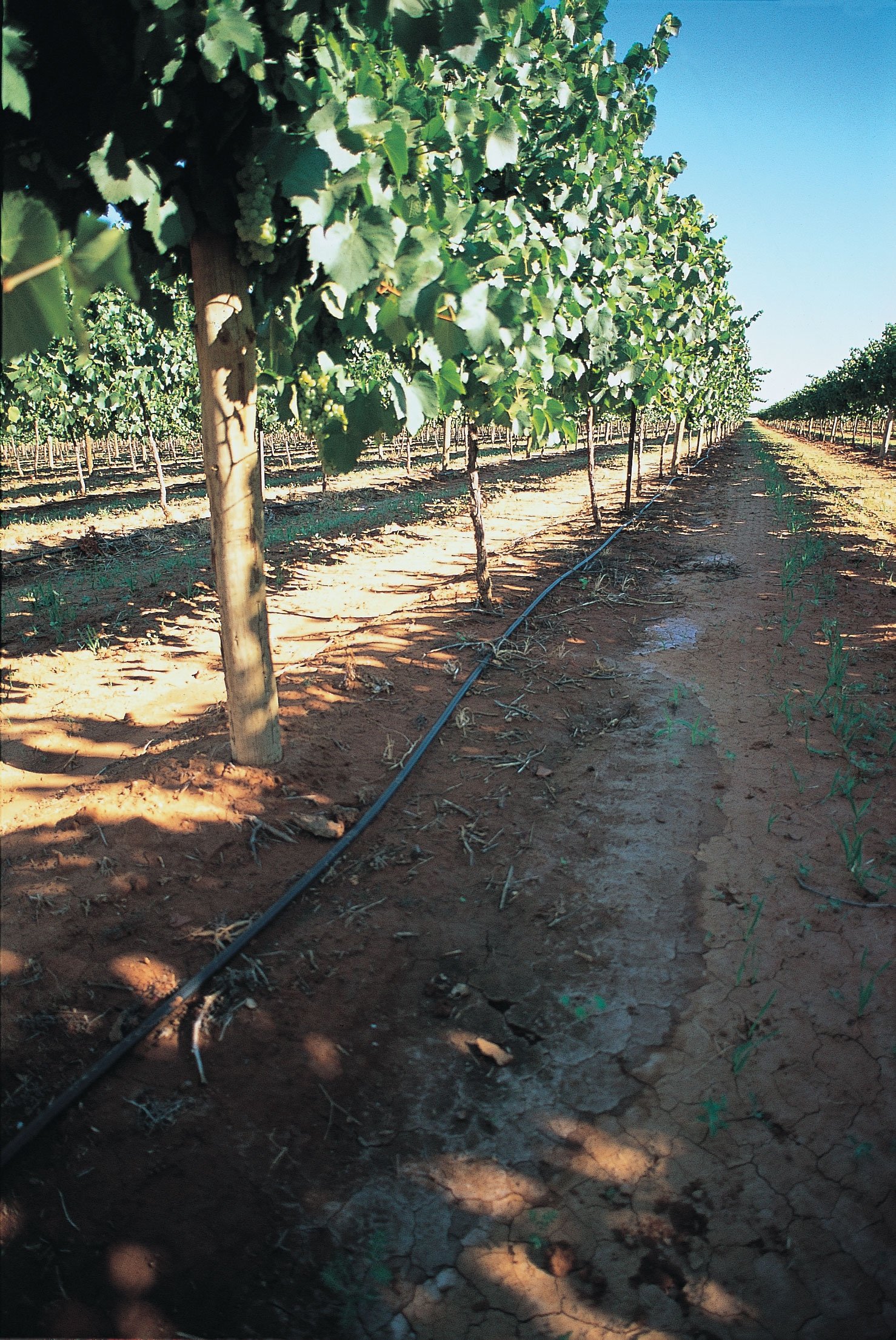System drainage, or drainout is an issue faced by drip irrigators. It can cause uneven water application, restrict vehicle access, disease, environmental impacts and crop productivity loss.
Drainage occurs after every irrigation event when water in the submains and laterals run to the lowest point in the orchard or vineyard. In large systems with long laterals and large submains it can generate significant volumes of water, especially in systems where irrigation is applied frequently, such as when pulse irrigating.
There are several options to minimise drainage from drip systems and professional advice is necessary. The options will vary between patches on the same property and combinations of options should also be considered.
Retrofit options
There are options available to minimise drainage without significant redesign. In many cases drainage will not be eliminated but the effect can be minimised or redistributed. Some options include:
- Changing dripline products to retain water in the dripline g. CNL (compensating non-leakage) or ND (non-drain),
- Install dripline non leakage valves:
- NaanDanJain Lateral LPD
- Netafim DNL
- Sustaining (slave) valve on downhill submains,
- Non return valve on uphill submains,
- Minor alterations:
- Shortening flushing submains.
New designs
Choosing appropriate valve positions can minimise drainage. Designs should consider valve siting which minimises the need for larger sized submains. Most drainage is generated from submains and large submains have a larger water reservoir, smaller submains can minimise, but not eliminate, system drainage. Some options include:
- Positioning valves in the middle of submains,
- Positioning valves at the bottom of slopes,
- Adding check valves at intervals upslope from the valve,
- Avoid clustering valves and backup filters if it causes use of larger submain piping.
Additional submains could be added to shorten lateral run length.
Management Considerations
Other aspects to consider are:
- Is pulsing necessary?
- Maintain system hygiene by:
- Flushing regularly,
- Maintaining periodic biocide (chlorine or hydrogen peroxide) treatments,
- Minimise root intrusion in surface drip systems by periodically lifting dripline out of drift and organic matter,
- Manually draining pipes and laterals to avoid damage to the system.
Conclusion
Drip drainage can have significant impacts on orchard performance. It is important to test systems and identify the true application of water over a 24-hour period if drainage is an issue.
For further information and case studies, visit the Agriculture Victoria page on Drip Drainage.


